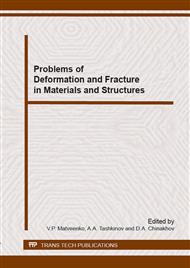p.29
p.35
p.43
p.51
p.59
p.67
p.75
p.83
p.89
Analysis of Transient Thermal Processes in the Steel Billet at Different Regimes of Air Cooling
Abstract:
The work deal with numerical modeling of the air cooling of cylindrical billet. The solution is carried out taking into account the dynamics of environmental air, radiation heat transfer, turbulence of the flow and conjugate heat transfer. The modeling process was realized in the accordance with a scheme of manufacturing of alloys with the structure of lower carbide-free bainite. A mathematical model has been developed by means of the finite-volume software Ansys CFX. The most effective mechanisms to control the cooling speed of the billet have been identified during numerical experiments.
Info:
Periodical:
Pages:
59-66
Citation:
Online since:
October 2015
Authors:
Keywords:
Price:
Сopyright:
© 2016 Trans Tech Publications Ltd. All Rights Reserved
Share:
Citation:


